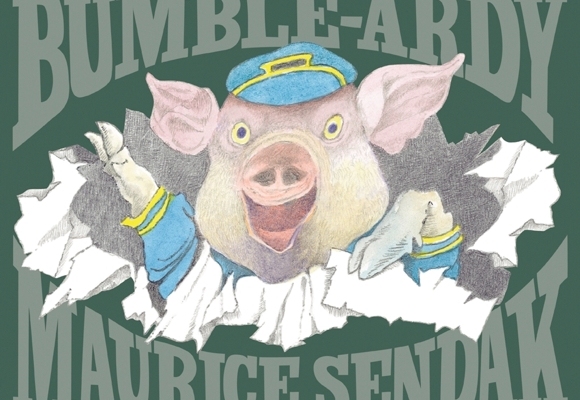Bumble-Ardy by M. Sendak
DOI:
https://doi.org/10.20361/G2GW2QAbstract
Sendak, Maurice. Bumble-Ardy. New York: HarperCollins Publishers, 2011. Print.
Maurice Sendak’s devotion to chaos, revelry, and the inherent wildness of children is present once again in Bumble-Ardy, the story of a little pig intent on celebrating his ninth birthday. Having had his first eight birthdays summarily passed over by an immediate family who “frowned on fun,” Bumble-Ardy is overjoyed when he is adopted by his “devine” Aunt Adeline. Like the doting relative she is, Adeline throws Ardy a sweet and thoughtful (though low-key) birthday party; however, Ardy, unsatisfied with his aunt’s efforts, decides to throw his own party, without his aunt’s permission. Having invited all of his most unsavoury friends, Bumble-Ardy’s party crescendos into a chaotic whirlwind until Aunt Adeline finally arrives home to break up the shenanigans.
Many children will have been introduced to Sendak’s work through the classic Where the Wild Things Are, and superficially at least, many of the same elements are at work in Bumble-Ardy. The art style remains raw, colourful, and roughly executed, as a complement to the subject matter. However, the wildness on display in Bumble-Ardy is written to very different effect than that of Where the Wild Things Are. Whereas Wild Things’ Max was instantly relatable to young children—his mischief presented as harmless escapism and the product of a healthy and flourishing imagination—Ardy lacks the character definition necessary both to connect with readers and to excuse his behavior. While being deprived of birthday parties for nine years could certainly make a little boy act out, Ardy’s actions in the story feel especially deceptive, almost crossing a line from mischief into malice.
Though Aunt Adeline forgives her nephew, of course, the emotional coda of the story feels tacked on. Instead, Adeline’s almost-terrifying outburst at arriving home, her house in shambles, is far more likely to stick with readers. The scenes of emotion, wildness, and chaos show glimpses of Sendak’s best work; however, the story itself makes a poor and lazy showcase for these talents. Flip through Bumble-Ardy to appreciate Sendak’s artwork, but when it comes time to read your child a bedtime story, go with Where the Wild Things Are instead.
Recommended with reservations: 2 out of 4 stars
Reviewer: Amy Paterson
Amy Paterson is a Public Services Librarian at the University of Alberta’s H. T. Coutts Education Library. She was previously the Editor of the Dalhousie Journal of Interdisciplinary Management and is very happy to be involved in the Deakin Review and the delightful world of children’s literature.

Published
How to Cite
Issue
Section
License
Authors who publish with this journal agree to the following terms:
- Authors retain copyright and grant the journal right of first publication with the work simultaneously licensed under a Creative Commons Attribution License that allows others to share the work with an acknowledgement of the work's authorship and initial publication in this journal.
- Authors are able to enter into separate, additional contractual arrangements for the non-exclusive distribution of the journal's published version of the work (e.g., post it to an institutional repository or publish it in a book), with an acknowledgement of its initial publication in this journal.
- Authors are permitted and encouraged to post their work online (e.g., in institutional repositories or on their website) prior to and during the submission process, as it can lead to productive exchanges, as well as earlier and greater citation of published work (See The Effect of Open Access).






